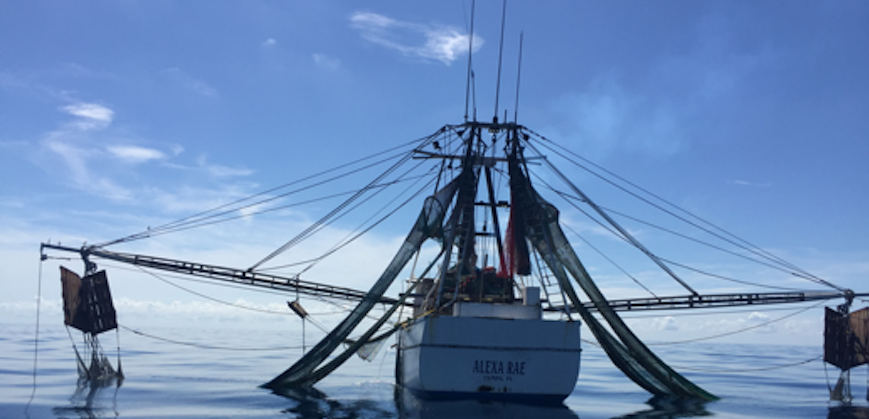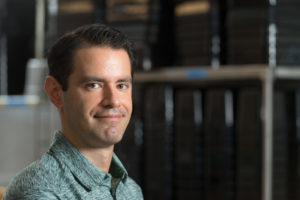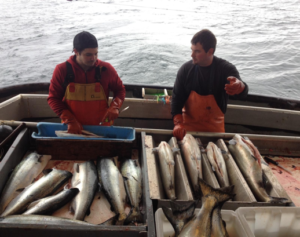
90 percent of the shrimp consumed in the U.S. is imported from overseas. But at CSU, students will eat shrimp caught by fishermen in Key West, Florida. Photo: Sea to Table
It’s not just for trendy restaurants. Colorado State University will soon serve sustainable salmon and shrimp to students in residential dining centers. The new dining option comes to CSU through a partnership with Sea to Table, a Brooklyn, New York-based company that connects restaurants, universities and the general public with independent fishermen in the United States.
CSU joins more than 100 colleges and universities — including the University of Colorado — that have worked with Sea to Table, which ensures seafood is caught in the wild and is not farm-raised. The company also makes sure seafood is not processed overseas and is not enhanced with hormones or antibiotics.

“Fresh salmon from Alaska has so much more flavor than a farm-raised product,” said Lucas Miller, senior associate director with CSU’s Residential Dining Services.said. “When it’s wild-caught, it also tends to be of higher quality.”
The United States imports more than 80 percent of the seafood consumers eat, according to FishWatch, which is maintained by the National Oceanic and Atmospheric Administration Fisheries. A significant portion of imported seafood is caught by American fishermen, exported overseas for processing, and then reimported to the United States.
Miller, who implemented a similar program at Ball State University in Muncie, Indiana, prior to joining CSU, said most people think that serving sustainable seafood means much higher costs. But that’s not the case.
“When we looked at the cost of using domestic products, it’s not much more expensive,” he said. “You get a better product, and being able to track where the seafood is caught is fantastic. It’s neat that we can share that story with students.”
What is sustainable seafood?
The Marine Stewardship Council certifies seafood as sustainable using science-based evidence and recommendations from fisheries, fish farms and conservation experts, while the Monterey Bay Aquarium’s Seafood Watch provides consumer guides on sustainable seafood.
Seafood Watch rankings include:
- best choices
- good alternatives and
- seafood to avoid.
The organization also has an app with up-to-date recommendations for ocean-friendly seafood and sushi.
The Marine Stewardship Council helps locate sustainable seafood by country and restaurants with sustainable seafood on the menu. Find recipes on both sites, too.
Tracking fishermen from Florida to Alaska

Sea to Table provides specific details on where the seafood is coming from; the Coho salmon purchased by CSU comes from the waters around Annette Island, Alaska, where it is caught by Metlakatla tribal members. The wild Gulf shrimp is caught off Key West, Florida, by fisherman on the ship Alexa Rae.
Sea to Table’s Brad Marder said that universities’ involvement underscores their position as thought leaders when it comes to sustainability. “We value the eagerness of campus and university dining programs across the country to learn more about the origin of their food,” he said.
Salmon and shrimp are two of the most popular seafood items in residential dining centers at CSU. So, Miller and his team won’t have to coax students to try something they might not want to eat.
The new initiative also meshes well with CSU’s larger commitment to sustainability.
Housing & Dining Services has already taken strides to divert food waste and create compost, and to use fresh lettuce grown on campus. Earlier this year, CSU also launched an organic hand fruit program, ensuring that whole fruit in dining centers is organic or locally sourced.
“We are always looking for new ways to expand our sustainable approaches on campus,” said Tim Broderick, assistant director of sustainability in Housing & Dining Services.
Miller said that over time, Residential Dining Services may expand the seafood lineup.
“We are starting with the seafood that is used the most, to get the biggest impact,” he said. “Once we get it started, who knows where we can go from there?”